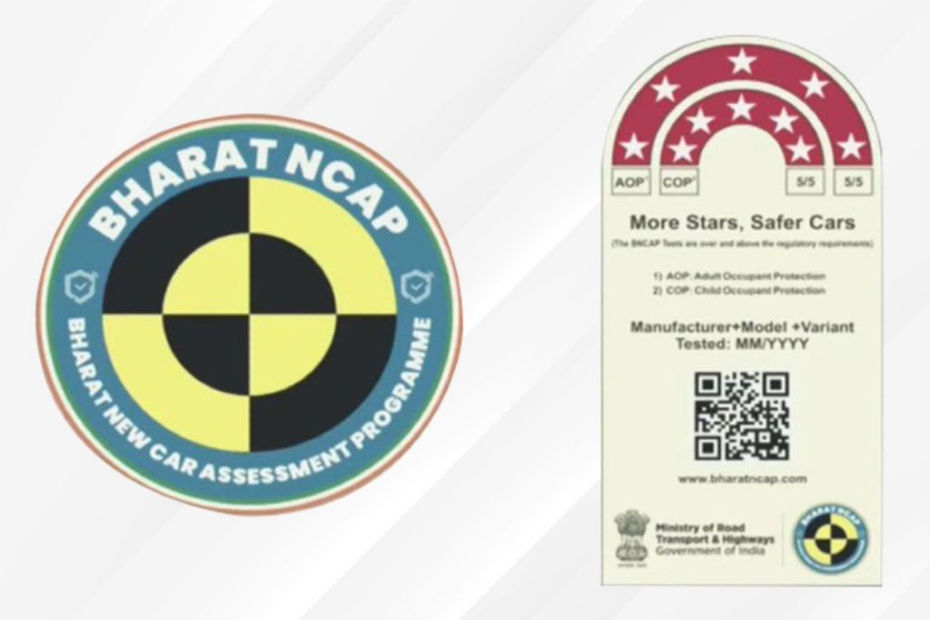Bharat NCAP Already Has Plans For Updating Crash Test Parameters For Better Safety
Modified On Aug 23, 2023 03:19 PM By Rohit
- Write a comment
The updates have been broadly categorised into active and passive safety systems, which include a 360-degree camera and rear impact protection

-
Bharat NCAP to swing into action on October 1, 2023.
-
It will conduct near-identical tests as other international car-safety-assessing bodies like Global NCAP.
-
Active safety features help prevent an untoward incident from happening.
-
Passive safety tech is useful to minimise risk to occupants in case any vehicle is involved in an accident.
-
Previous government-mandated safety updates include dual front airbags and ABS with EBD.
The Bharat NCAP (India’s own new car assessment program) was revealed recently by the Union Minister of Road Transport and Highways, Nitin Gadkari. It entails various parameters to crash test cars – both existing and new – and then to assign them an overall safety rating. During the presentation, it was also shared that the Bharat NCAP protocols will continue to evolve and be updated in the future to continue pushing for higher safety standards. Some of the suggestions in consideration are detailed below, broadly split into two categories:
Active Safety Systems

Active safety systems are essentially the safety features which help to prevent an accident or untoward incident. Some examples include electronic stability control (ESC), 360-degree camera, advanced driver assistance systems (ADAS), and TPMS (tyre pressure monitoring system).
While ESC is expected to become a mandatory safety feature soon, in the future features like a 360-degree camera, autonomous emergency braking (AEB) with brake assist, and lane departure warning could be basic requirements for a good safety rating from Bharat NCAP.

Currently, these features – along with some other driver-assist functions – are mainly only available on cars having ADAS. The 360-degree camera is turning out to be an exception, though, which is now also available on mainstream cars including the Maruti Baleno and Brezza, Nissan Magnite, and Toyota Urban Cruiser Hyryder.
Also Read: Hyundai Motor To Add A Third Manufacturing Plant In Its Arsenal Courtesy GM Motors
Some other ADAS functionalities include adaptive cruise control, high-beam assist, and rear-cross traffic alert. Cars such as the Kia Seltos, MG Hector, Tata Safari, and Hyundai Tucson are equipped with these ADAS features.
Passive Safety Systems

Passive safety features are those that come into play when a vehicle is involved in an accident or an unfortunate event, to minimise the harm to the occupants. Examples include seatbelts, airbags, and crumple zones.
While a full-frontal crash test will also be performed on vehicles once the Bharat NCAP comes into force, the MoRTH has also hinted at the introduction of more tests and criteria to provide safety ratings to vehicles. These consist of an oblique side pole impact test and rear impact protection.

The BNCAP also intends to add safety assessment protocols that would be specific to EV and alternate fuel models. We believe the latter could comprise CNG and flex-fuel-powered cars. Such models may have different architectures compared to the usual petrol or diesel models and their safety may not be assessed accurately by regular crash tests. The risks with these alternative fuel vehicles can include leaks from additional tanks or even electric discharge from EVs.
However, the Ministry hasn’t detailed the exact timelines of when the newly suggested updates will be rolled out for Bharat NCAP. Most NCAPs will update protocols every few years at intervals of 4 to 5 years.
Also Read: 6 Electric Cars That Have Made 2023 Greener So Far
Bharat NCAP: A Quick Recap
View this post on Instagram
India joins the global fraternity of safety assessment programs with the Bharat NCAP. It will put cars through multiple crash tests, including frontal offset and side impact tests, and give them a safety rating based on their results. The Bharat NCAP will come into effect from October 1 this year. The MoRTH has shared various parameters that will be considered for these tests like the type of vehicle to be tested, rating systems and more, all of which are detailed in our main story.
6 out of 6 found this helpful















